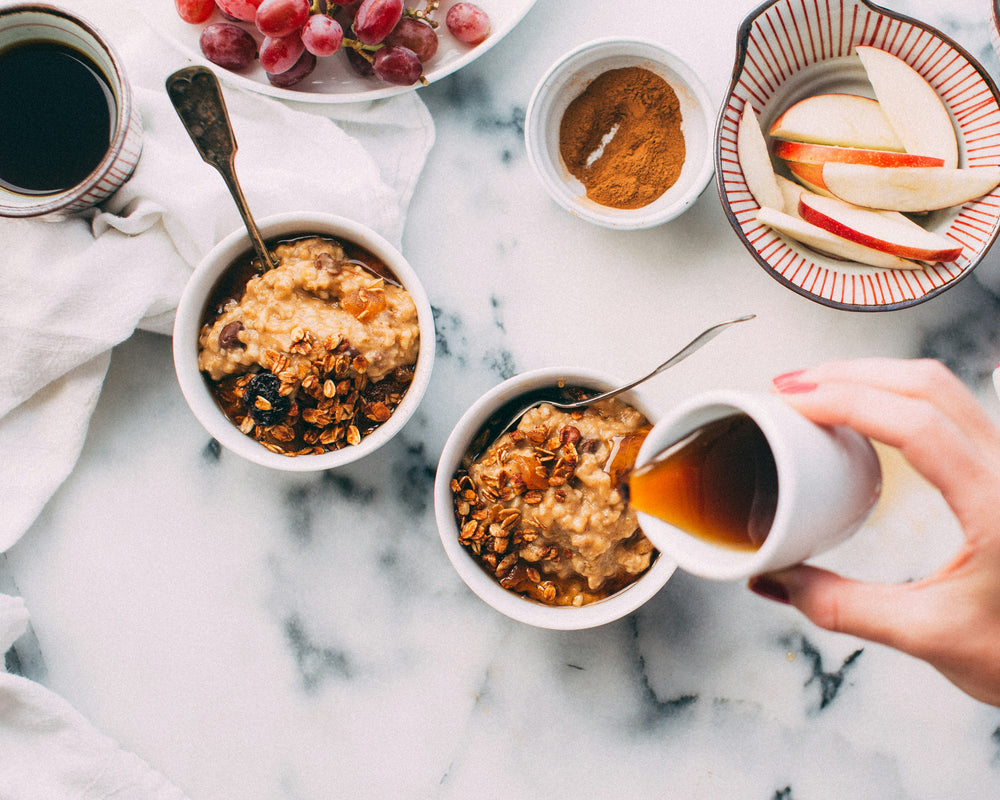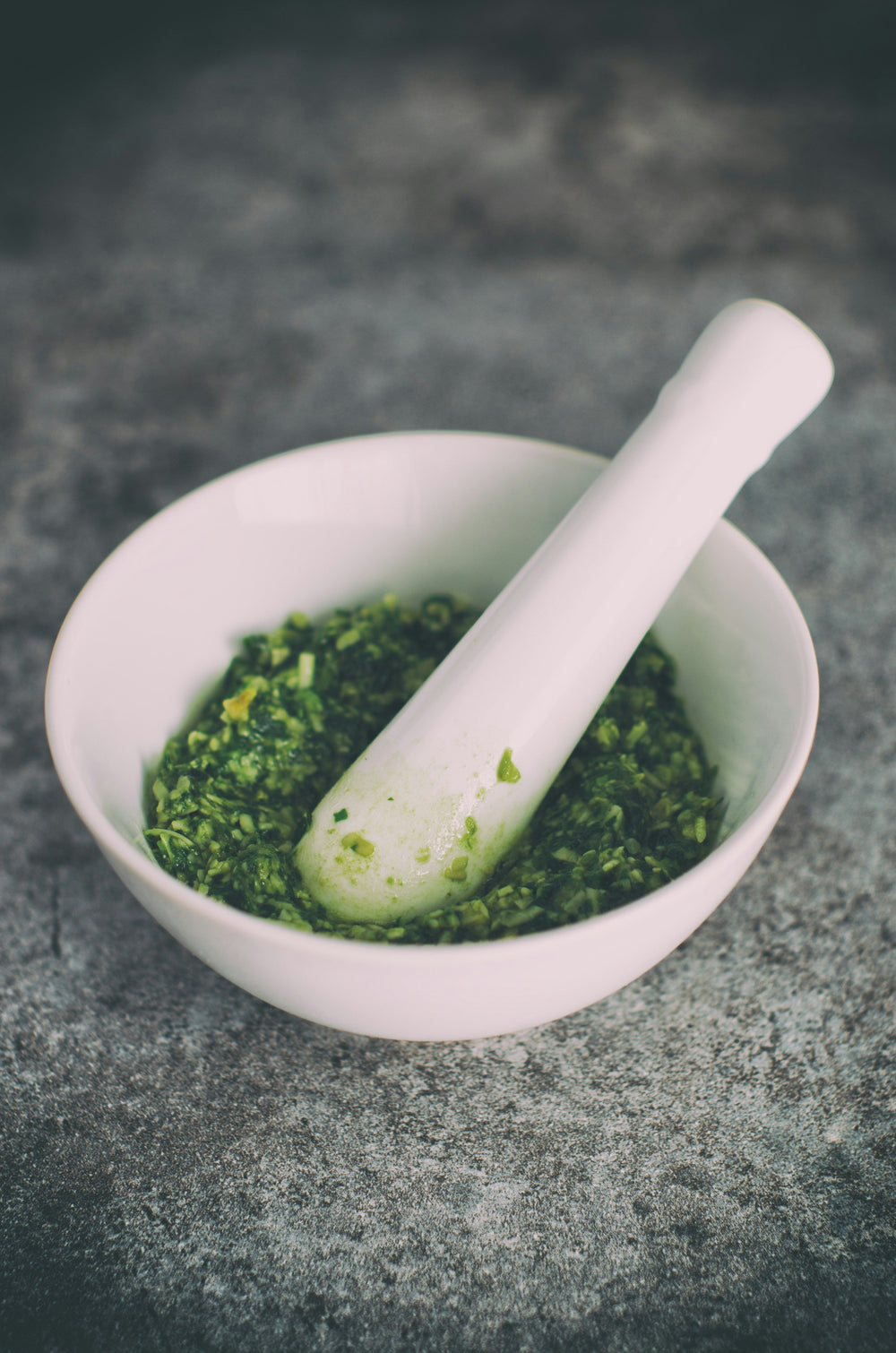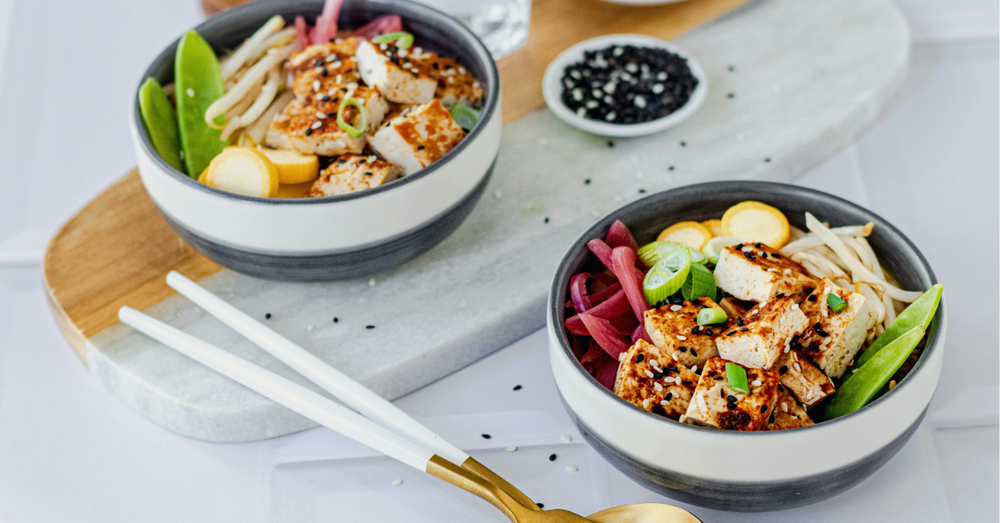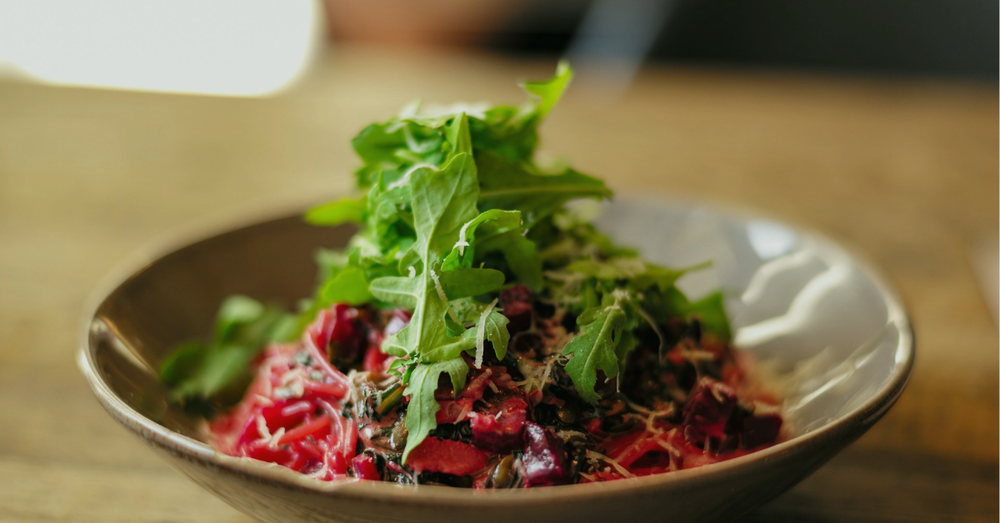This creamy green soup brings together broccoli, cauliflower, and kale for a delicious bowl that feels both comforting and energising. Finished with crispy chickpeas and toasted almonds, it is an easy way to enjoy a whole day’s worth of greens in one simple, nourishing meal.
what's the best time to take your synbiotic?
What's The Best Time To Take Your Synbiotic? Supporting your gut health is about more than just taking a supplement. When and how you take your synbiotic can make a real difference in how well it works for you. Whether you’re new to synbiotics or looking to get more from your current routine, understanding the best way to take them can help you get closer to your gut health goals. Why You Should Take Them in the First Place Even if you eat a balanced diet and consider yourself healthy, there are still good reasons to add a synbiotic supplement to your daily routine. Our gut is sensitive to modern life. Factors such as stress, travel, processed foods, certain medications and environmental influences can all disrupt the balance of our gut microbiota so supporting your gut health can help you stay resilient. When looking for ways to support a healthy gut, many people include fermented foods in their diet, such as kefir, sauerkraut, kimchi and kombucha. These often contain live and active cultures, but the amount of live bacteria and their ability to remain viable can vary. By the time they are eaten or reach the gut, their numbers may be lower than expected. This does not make fermented foods any less valuable, but it does mean their live bacteria content can be inconsistent. Synbiotics, which combine probiotics with the prebiotic fibres that feed them, can help to: Support the integrity of your gut barrier Assist with nutrient absorption Contribute to more regular bowel movements Support your body’s natural immune responses Why Timing Matters Your stomach is a highly acidic environment. According to research, many strains, including Bifidobacterium and Lactobacillus, are sensitive to stomach acid, which rises naturally during and after meals. This is why the delivery time of your...

What's The Best Time To Take Your Synbiotic?
Supporting your gut health is about more than just taking a supplement. When and how you take your synbiotic can make a real difference in how well it works for you. Whether you’re new to synbiotics or looking to get more from your current routine, understanding the best way to take them can help you get closer to your gut health goals.
Why You Should Take Them in the First Place
Even if you eat a balanced diet and consider yourself healthy, there are still good reasons to add a synbiotic supplement to your daily routine. Our gut is sensitive to modern life. Factors such as stress, travel, processed foods, certain medications and environmental influences can all disrupt the balance of our gut microbiota so supporting your gut health can help you stay resilient.
When looking for ways to support a healthy gut, many people include fermented foods in their diet, such as kefir, sauerkraut, kimchi and kombucha. These often contain live and active cultures, but the amount of live bacteria and their ability to remain viable can vary. By the time they are eaten or reach the gut, their numbers may be lower than expected. This does not make fermented foods any less valuable, but it does mean their live bacteria content can be inconsistent.
Synbiotics, which combine probiotics with the prebiotic fibres that feed them, can help to:
-
Support the integrity of your gut barrier
-
Assist with nutrient absorption
-
Contribute to more regular bowel movements
-
Support your body’s natural immune responses
Why Timing Matters
Your stomach is a highly acidic environment. According to research, many strains, including Bifidobacterium and Lactobacillus, are sensitive to stomach acid, which rises naturally during and after meals. This is why the delivery time of your synbiotic matters. Taking it on an empty stomach 30 minutes before breakfast where your stomach environment is the least acidic, gives the bacteria an extra layer of protection as they travel through your stomach to your gut.
When to Take Your Synbiotic
For Epetōme, the recommendation is to take it on an empty stomach. However, this might not be the best choice in every situation. For example, if you’re taking antibiotics, it’s best to wait at least two hours before having your synbiotic, as antibiotics can affect both harmful and beneficial microbes.
For those who know they can be sensitive to supplements, taking it with food may help reduce irritation and make it easier on the stomach.
If you fast or don’t usually eat breakfast, we recommend taking them 20-30 minutes before your first meal of the day.
The Most Important Thing: Consistency
Consistency matters just as much as the time of day you take your supplement, if not more. Habit strength has a big impact on how likely you are to stick with something. People who build a simple daily routine are more likely to take their supplements regularly over time.
Research suggests that mornings tend to work best for many people and that adherence is higher earlier in the day, which may be because it’s easier to maintain habits when they’re tied to a stable part of your routine. Convenience plays a big role in whether you actually remember to take your supplement.
Choosing a formulation that’s easy to take and fits naturally into your day can make all the difference. Linking it to something you already do, like having breakfast, can help make it second nature.
What Makes a Good Synbiotic
The way a supplement is delivered plays an important role in how effective it can be. Most standard capsules dissolve before they reach the gut, meaning the live bacteria may not survive long enough to have their intended effect. When it comes to the delivery method, Epetōme uses a duo cap system. The inner capsule protects the live bacteria and dissolves later in the intestines, which is where they are intended to get to work.
The specific strains included in a supplement also matter. The effects of probiotics can be strain specific, meaning the exact strain determines the kind of benefits you may experience. This is why it’s important for brands to clearly disclose the strains they use, not just the species.
In order to get the best results, daily use is important. A shelf stable supplement can make this easier, as it can be stored somewhere visible rather than forgotten in the fridge.
Building a Strong Gut Routine
Supporting your gut does not need to be complicated. Start by building small, sustainable habits.
-
Eat a fibre rich diet with plenty of fruits, vegetables, legumes and whole grains
-
Include fermented foods such as kefir, kimchi or sauerkraut
-
Try to reduce ultra processed foods
-
Manage everyday stress as best you can
-
Keep a regular sleep routine
-
Stay active in ways that you enjoy
These small actions, combined with a high quality synbiotic taken consistently, can help build a stronger and more resilient gut microbiome.
References
Badawy, S. M., Shah, R., Beg, U., & Heneghan, M. B. (2020). Habit strength, medication adherence, and habit-based mobile health interventions across chronic medical conditions: Systematic review. Journal of Medical Internet Research, 22(4), e17883. https://doi.org/10.2196/17883
Liu, L., Tao, H., Xu, J., Liu, L., & Nahata, M. C. (2024). Quantity, duration, adherence, and reasons for dietary supplement use among adults: Results from NHANES 2011–2018. Nutrients, 16(12), 1830. https://doi.org/10.3390/nu16121830
Phillips, L. A., Burns, E., & Leventhal, H. (2020). Time-of-day differences in treatment-related habit strength and adherence. Annals of Behavioral Medicine, 55(3), 280–285. https://doi.org/10.1093/abm/kaaa042
Tompkins, T. A., Mainville, I., & Arcand, Y. (2011). The impact of meals on a probiotic during transit through a model of the human upper gastrointestinal tract. Beneficial Microbes, 2(4), 295–303. doi: 10.3920/BM2011.0022.
lifestyle. gut health recipes.
ready in 10 minutes
herb-whipped cottage cheese chicken bagels.
These basil whipped cottage cheese protein bagels make a fresh, high-protein breakfast or lunch, combining creamy herb-blended cottage cheese with juicy chicken, rocket, and tomatoes. They’re quick to assemble, packed with flavour, and perfect for a nourishing breakfast or light lunch.
ready in 10 minutes
kiwi chocolate protein chia pots.
These Kiwi Chocolate Protein Chia Pots make an ideal high-fibre, high-protein breakfast that keeps you full and energised all morning. They’re quick to prepare, easy to store, and perfect for a healthy grab-and-go option.
ready in 15 minutes
spiced apple porridge.
This spiced apple and pumpkin seed porridge is a warming, high-fibre breakfast that’s perfect for cosy mornings. Made with creamy oats, gently caramelised apples and a crunchy pumpkin seed topping, it’s ready in just 15 minutes and serves one.
ready in 50 minutes
prep-ahead baked blueberry oats.
These prep-ahead oven-baked oats with blueberries and bananas are rich in protein and fibre, making them a nourishing, gut-friendly breakfast to enjoy all week.
ready in 15 minutes
spicy green eggs with feta.
These spicy green eggs with feta are a quick, protein-rich recipe packed with gut-friendly ingredients like spinach, courgette, and spring onion. Baked in the oven or air fryer, they’re simple to make, full of flavour, and support digestion with a balance of fibre, protein, and healthy fats. Perfect for breakfast, brunch, or a light meal, this vibrant dish proves that nourishing your gut can be both delicious and easy.
ready in 10 minutes
egg wrap with pesto.
Bright, fresh, and ready in just 10 minutes, this flavour-packed wrap serves one and is ideal for breakfast, lunch, or any time you’re after something simple yet filling.
ready in 10 minutes
peach cobbler overnight oats.
Start your day with a gut-friendly twist on a classic dessert. The peach cobbler overnight oats serve 2–3 and takes just 10 minutes to prepare the night before. Packed with fibre, flavour and feel-good ingredients, it’s the perfect make-ahead option for busy mornings or a nourishing snack you can enjoy any time of day.
ready in 15 minutes
smoky egg salad bagel crunch.
This smoky harissa egg bagel is the perfect 15-minute meal. Made with creamy Greek yoghurt, tangy pickles, and a hint of spice, it’s a high-protein twist on classic egg salad that delivers on both taste and texture. Ideal for busy days, this easy bagel recipe makes lunch feel gourmet without the effort.
ready in 20 minutes
chewy breakfast matcha protein cookies.
Soft, satisfying, and subtly sweet—these breakfast cookies are made to fuel your morning the right way. With fibre-rich oats, plant-based protein, and antioxidant-packed matcha, they’re a gut-friendly grab-and-go option that doesn’t compromise on flavour or function.
ready in 15 minutes
lemon & poppy seed pancakes.
Emily's light, gut-friendly crêpes are the perfect balance of fibre, protein, and healthy fats to support digestion and keep you feeling great.
ready in 10 minutes
carrot cake breakfast oats.
Start your day with a delicious and nutritious breakfast option - Carrot Cake Oats. Filled with fibre diversity to promote healthy digestion.










































